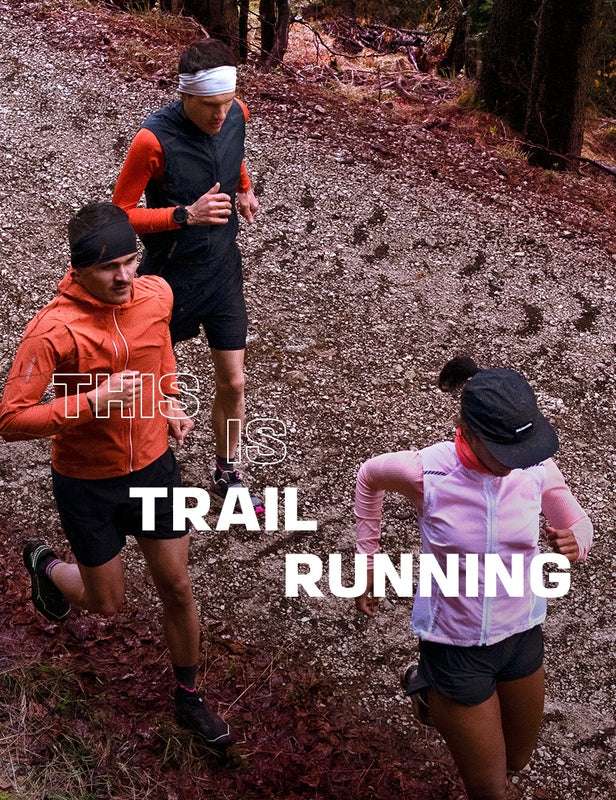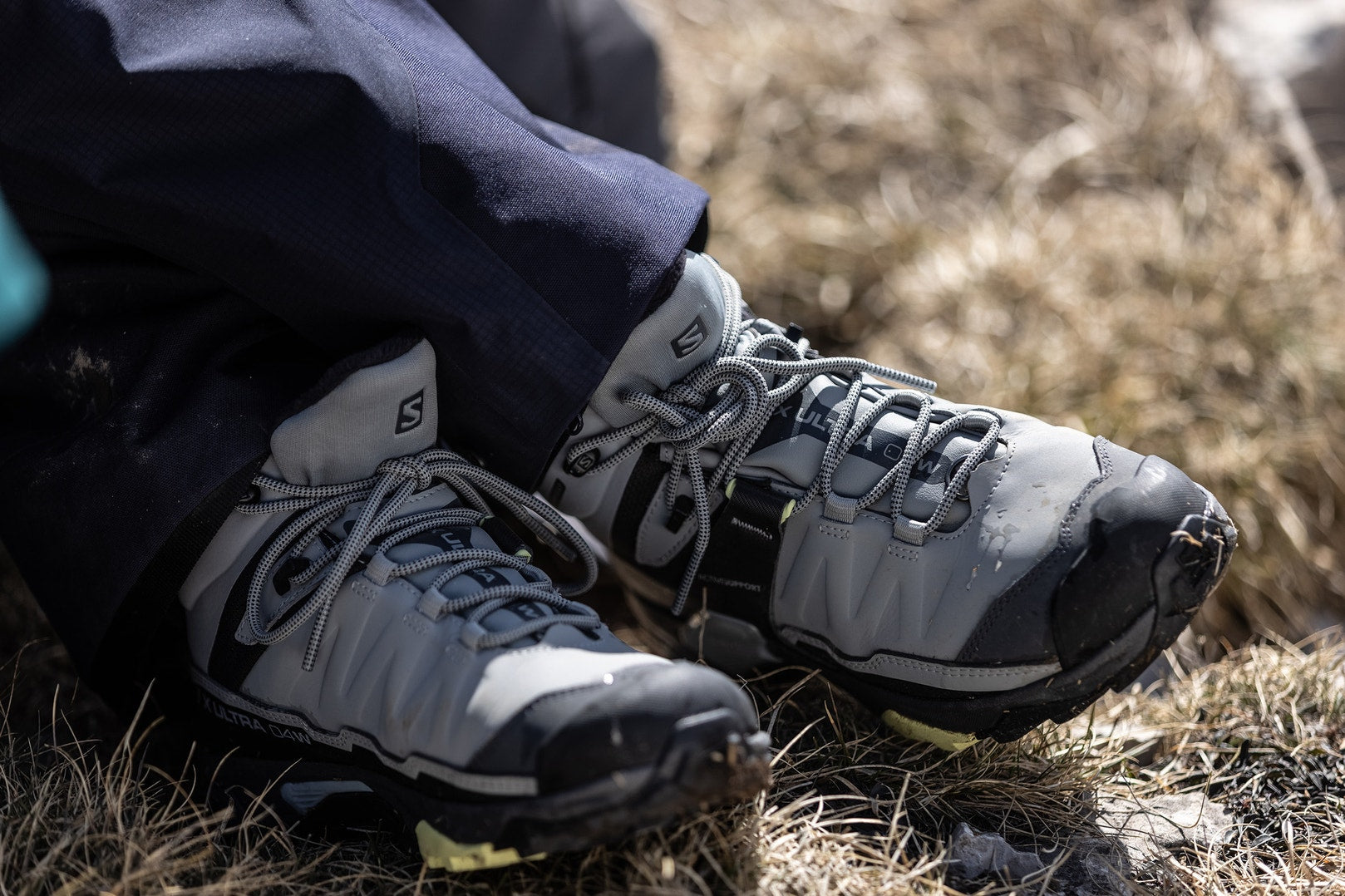The perception of comfort is a very personal thing. Indeed, when asked “What is a comfortable shoe for you?”, the answer might be “lightness”, “support”, “cushioning” or “having the right size”. A comfortable shoe is, above all, a shoe that feels great and that’s designed specifically for your sport (and therefore your needs).
Here are eight tips that will enable you to hit the trail with comfortable footwear:

@DOM DAHER
Find boots that are designed for your type of hiking
Note: A shoe’s “upper” is the part that covers the top of the foot. A low upper stops below the malleolus while a high upper extends above the ankle. On mid shoes, the upper goes up to the malleolus.
Choosing hiking boots that are designed for your type of hiking and terrain is the first step towards comfort. Most people differentiate between three types of hiking:
- Short hike or stroll on easy terrain: if you do not have ankle problems choose a lightweight, flexible shoe with a low upper.
- Classic or medium-distance hiking: choose a boot with a high or mid upper that provides support and protection for your ankles. This will deliver the comfort you need when you start to get tired towards the end of a long hike.
- Backpacking, trekking, long-distance hiking: if you’re planning on walking for several days with a big backpack, you need high, sturdy boots. These will provide the best ankle support and stability as well as protect against rocks and rugged terrain when you’re carrying a fully loaded backpack. The protection provided by your shoes is often synonymous with long-lasting comfort.
So, comfortable boots are those that provide the level of support and protection you need for your style of hiking.
Women's hiking bootsMen's hiking boots Kids' hiking boots
Try on your boots to make sure they’re comfortable
Once you’ve decided on the right type of boot, take the time to try the chosen model while you’re in the store (or at home if you buy them online). This way, you’ll be able to establish the overall comfort of the shoes and check the following points:
- The size of your shoes: with the laces loosened and push your foot forward until your toes touch the front of the boot. There should be enough room to place your index finger behind your heel.
- Foot support: with the laces tight, you should be able to walk in the boot without your heel slipping. If your heel moves, the boot will rub against your skin and you might get blisters (check out our article on “How to avoid getting blisters when you’re hiking”). As for your toes, they should be able to move freely.
- You also need to pay attention to any pain points or seams that don’t match the shape of your foot. The cuff, regardless of height, should not interfere with your ankle bone either.
If possible, compare several pairs of boots that are made for your style of hiking and go with the one that feels best.
The “terrain filter” concept
When we talk about a hiking boot’s terrain filter, we’re speaking about its ability to smooth out rough surfaces (rocks, roots, etc.) The terrain filter is directly linked to the thickness of the sole and the density of the foam in the boot’s sole.
- Short walks on smooth terrain: a shoe with a light terrain filter allows you to feel the ground better. This is a sensation that many hikers appreciate, and which helps you keep your balance.
- Long hikes or treks on technical terrain: boots with a lot of terrain filter will protect your feet and help them feel better when walking on rocks or rugged surfaces.
Finding the right level of sensitivity and protection under your feet is a criterion of comfort that is even more important if you’re walking for a long time with a heavy load.
Women's hiking bootsMen's hiking boots Kids' hiking boots

@DOM DAHER
Choose materials that you like best
The choice of materials in your shoes, particularly the inner lining, is a very personal choice and is generally determined by experience.
For example, some people prefer a leather lining because synthetic materials can often cause your feet to overheat.
If you plan to hike primarily in hot, dry weather, opt for boots without a waterproof membrane because they will be more breathable. On the other hand, if you hike in wet weather then you’ll probably prefer boots with a Gore-Tex type (GTX) membrane. Learn more about Gore-Tex.
The weight of the boot should be appropriate for your type of hiking
Lightweight hiking shoes are often considered more comfortable and less tiring. This is true for those who are comfortable with short hikes on flat terrain.
For long hikes on technical terrain or for intense use, you’ll need protection and support. Sturdy boots are heavier but in the long run they will be more comfortable and protect your feet better.
Women's hiking bootsMen's hiking boots Kids' hiking boots
Lateral stiffness
When hiking, a flexible shoe allows the foot to roll and is therefore more comfortable when walking. Take a walk with ski boots and you’ll see right away what we’re talking about!
However, a certain amount of lateral stiffness provides more support and more stability on technical terrain and when you carry a heavy backpack.
Flexible shoes provide freedom of movement and better feel for the ground during light hikes.
Upgrade the insole
The insole is a critical interface between your foot and the shoe. And while original, quality insoles work fine in many cases, you may need to change them if:
- The material is not suitable for you (too hot, excessive sweating, etc.). If so, leather insoles can improve comfort.
- You wear orthopedic insoles: consult your doctor to find out if you need custom footbeds designed specifically for hiking.
By upgrading your insoles to ones that are more adapted to your needs and the shape of your feet, your feet will be more comfortable and have greater stability.
Women's hiking bootsMen's hiking boots Kids' hiking boots

@Matt Georges
Wear high-quality hiking socks
Our last piece of advice on how to increase the comfort of your hiking boots is to wear high-quality socks designed specifically for hiking:
- Don’t use cotton socks because they retain moisture. Instead use socks made from a synthetic, hydrophobic material.
- Adapt the height of your socks to the height of your boots
- Socks with a dedicated right and left foot will be more ergonomic and will help eliminate discomfort from seams.
- Adapt the thickness of your socks to the weather conditions on your hike. Cold and heat can heavily influence the comfort of your shoes.
A point that we have yet to address is the comfort you get from a nice looking pair of hiking boots. Keep this in mind and, during your search, use it as a last resort to help you decide between two pairs of shoes!



